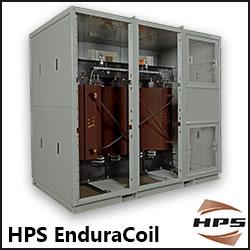Imagine a furnace that makes electricity. That is one future for the home - a future that is being aggressively pursued by various boiler companies across Europe.
Electricity With My Hot Water?
Acumentrics | Acumentrics
| Imagine a furnace that makes electricity. That is one future for the home - a future that is being aggressively pursued by various boiler companies across Europe. |
|
Electricity With My Hot Water?
Welcome a New Era of Fuel Cells for the Home |
| Acumentrics Corporation |
|
Imagine a furnace that makes electricity. That is one future for the home - a future that is being aggressively pursued by various boiler companies across Europe. In Europe, there is much concern about climate change, and incentives are in place for consumers to meter electricity back to the grid. Suddenly, the staid, old business of home furnaces is getting exciting.
Acumentrics has many power systems in the field, but did not initially consider going into the home market. "While we knew we could provide great efficiencies," says CTO Norman Bessette, "the home market is not a slam dunk. There's a lot of detail in how to integrate into a hot water system. Elco is helping us understand that part of the engineering."
There are many different types of fuel cells: polymer, ceramic, molten metal, and more. All fuel cells work by using chemical reactions to "pump" electrons. There are four primary ways to drive the "pump"-with hydrogen (the one most often talked about), with alcohol, with carbon dioxide, and in Acumentrics' case with oxygen. The huge advantage with using an oxygen pump is that oxygen is abundantly available from the air. With the other three, hydrogen, alcohol, and carbon dioxide must all come from somewhere else. Other aspects of Acumentrics' technology also seemed well suited for a boiler. Their ceramic tubes have relatively high power density, and operate at high temperature. Unlike other fuel cell systems, they can disassociate municipal gas inside the cell (in-situ), which results in a more elegant and robust system. Other systems require bolt-on gas processing equipment called reformers. As a bonus, heat generated during the cell's operation can be captured and used for warming water. One other feature that impressed Elco was the responsiveness of the fuel cells. Their output can be dialed up or down. So when a home does not need as much electricity, gas consumption can be reined in. When a home requires more electricity, the cells can be cranked up. The heat output of several fuel cells cannot meet the requirements of a whole home in winter, so Elco's design augments the fuel cell heat with a high-efficiency condensing boiler. The whole system is packaged in a compact enclosure suitable for retrofits. The overall efficiency is touted to be 90%.
When does it hit the market? Elco has a working prototype and expects final design to be complete in 2008. Then it is a question of safety tests and cost reduction. If all goes well there should be some new options on the home-heating front by 2010. |
|
The content & opinions in this article are the author’s and do not necessarily represent the views of AltEnergyMag
Comments (0)
This post does not have any comments. Be the first to leave a comment below.
Featured Product


 One
such boiler company, the Elco Division of MTS Group, sought help with
revolutionizing its products from a small fuel-cell company named
Acumentrics. Elco was already well-known for its high-efficiency boilers
for homes, but was intrigued by the dual-play that fuel cells offer.
One
such boiler company, the Elco Division of MTS Group, sought help with
revolutionizing its products from a small fuel-cell company named
Acumentrics. Elco was already well-known for its high-efficiency boilers
for homes, but was intrigued by the dual-play that fuel cells offer. 